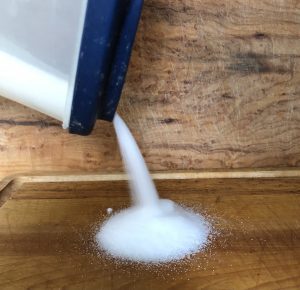When it comes to survival, the body will do anything it can to beat the odds. Breaking down ‘fructose’, a naturally occurring sugar, is one of those survival tactics that the body figured out millions of years ago – a time when animals and some humans needed to hibernate. Unfortunately we are now stuck with a system, that like a sleeping bear, we don’t want to poke.
What’s fructose? Fructose is fruit sugar found in table sugar and every naturally sweet carbohydrate on the planet. This includes honey, maple syrup, agave, fruits, and some vegetables. There is no fructose in proteins or fats.
Fructose can occur in nature by itself or attached to glucose in the case of table sugar. Where glucose gives us energy, fructose stores energy for us in the form of fat. (Keep in mind that this fat can be used as an energy source at a later time. For a hibernating bear, the fructose system is a good thing.)
If fructose’s impact was just limited to fat metabolism, it wouldn’t be such a health concern. Unfortunately, a high concentration of fructose can 1) raise blood pressure, 2) induce insulin resistance, 3) precipitate fatty liver diseases, and 4) cause gout.
- Blood Pressure: When fructose is broken down by the body it produces uric acid. The kidneys don’t like uric acid and so the organ’s response is to retain sodium (salt). This, in turn, constricts the arteries to protect the kidneys from more uric acid. With constriction of the arteries, blood pressure goes up.
- Insulin Resistance: The body is very sensitive to fructose and when high concentrations of fructose are present in the bloodstream, the body switches from using glucose to using fructose. Glucose builds up in the blood stream causing insulin resistance and hyperinsulinemia; both pre-cursors to type II diabetes.
- Fatty Liver Disease: Since the liver metabolizes the fructose into fat, the excess fat builds up on the liver causing fatty liver disease. One more thing… a high sodium concentration increases the enzyme that turns glucose into fructose.
- Gout: Eventually the excess uric acid builds up in the first joint of the big toe causing inflammatory arthritis.
The take-home message is that fructose (and salt) in high concentrations can trick the body into thinking it is approaching a hibernation period. If we don’t wish this to occur, we can do two things:
- lower our fructose intake by eating fruit and sugar in moderation and over a longer period of time, as well as lower salt intake, and
- dilute the fructose and salt concentrations in the blood by drinking water before consuming any food that is high in either.




